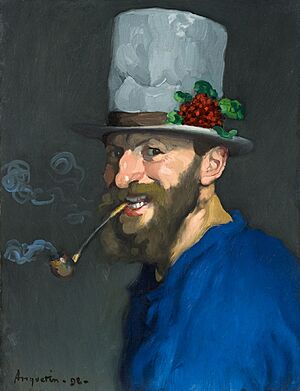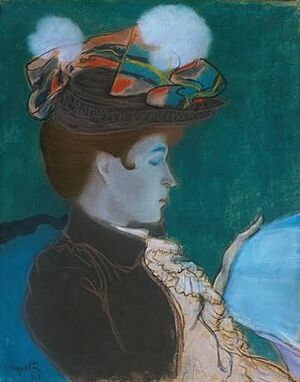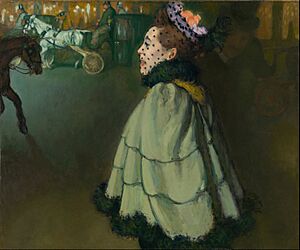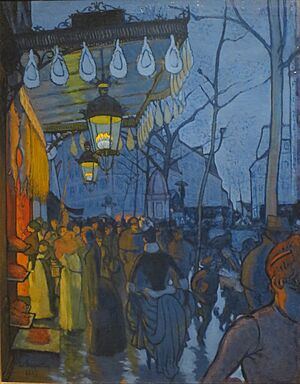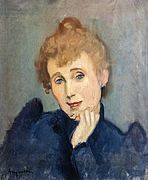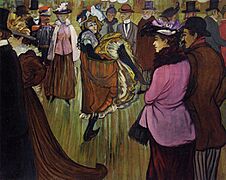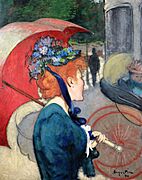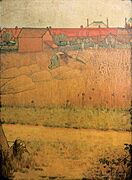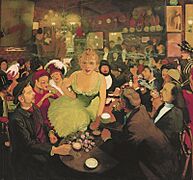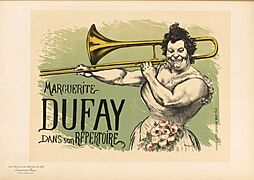Louis Anquetin facts for kids
Louis Émile Anquetin (born January 26, 1861 – died August 19, 1932) was a French painter. He was known for his unique art style called cloisonnism. This style used flat areas of color with thick, dark outlines, much like stained glass or Japanese ukiyo-e prints.
Biography of Louis Anquetin
Louis Anquetin was born in Étrépagny, France. He went to school at the Lycée Pierre Corneille in Rouen.
In 1882, Anquetin moved to Paris to study art. He joined Léon Bonnat's art studio. There, he met another famous artist, Henri de Toulouse-Lautrec. Later, both artists moved to Fernand Cormon's studio. This is where they became friends with Émile Bernard and Vincent van Gogh.
Around 1887, Anquetin and Bernard created a new way of painting. They used large, flat areas of color and strong, black lines to outline shapes. This style was named cloisonnism by an art critic named Édouard Dujardin. It looked a lot like stained glass windows and Japanese woodblock prints. One of Anquetin's paintings, Avenue de Clichy: Five O’Clock in the Evening, might have even inspired Van Gogh's famous Cafe Terrace at Night.
Over time, Anquetin decided to move away from these modern art styles. He became more interested in learning the techniques of the Old Masters. These were famous artists from earlier times, like Peter Paul Rubens. Because of this, Anquetin's later paintings, such as Rinaldo and Armida, often looked like Rubens's work. They also told stories using symbols and hidden meanings. In 1907, he met Jacques Maroger, a younger artist who shared his interest in older painting methods. They worked together for a while.
Later in his life, Anquetin wrote a book about Rubens. It was published in 1924. Louis Anquetin passed away in Paris.
Artistic Style and Works
Louis Anquetin's early work was very important in developing cloisonnism. This style helped shape modern art. His paintings often showed scenes from everyday life in Paris. He also created many drawings, watercolors, and pastels.
After the mid-1890s, Anquetin's art changed. He focused on the techniques of the Old Masters. His later paintings often featured grand scenes and allegories. He explored how light and color were used by artists like Rubens.
Gallery
-
Yvette Guilbert (1893) at the Musée Toulouse-Lautrec in Albi.


